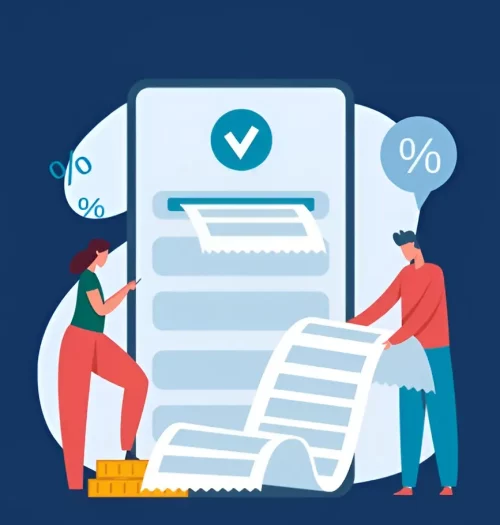The Up And Coming Market of Loan Against Property



A business requires a financial boost on several occasions. It flourishes only when it receives financial support during times of need. Anyone would expect that support, especially when the business is in crisis or is expanding.
Loan Against Property (LAP) is an excellent source of harnessing financial backing for your business. It is constructive for entrepreneurs who have an inventory of innovative ideas but lack monetary support. Loan Against Property (LAP) is a relatively short tenor retail lending product and is generally considered a higher credit risk product than Home Loans. In India, LAP can be offered by banks and large, mid and small-sized NBFCs.
Building a perfect fintech app for facilitating LAP is a challenge. There are various questions to be addressed to create that final version that will solve the problem of lending in the market.
We hosted Mr. Diwakar Pundir, a Finance veteran (Specialties in Credit & Risk Management for Small & Mid-Sized Companies) in India, to discuss the financial needs of LAP for their entrepreneurial pursuits. Here are a few innovative ways to ensure that Loan Against Property (LAP) is used effectively to achieve your business goals.
Diwakar: Looking at LAP as a product, it’s a large business opportunity globally. It was the two HDFCs that were dominant in LAPs until Bajaj Finance came in and took this product to new levels. One reason why LAP really took off in India – property is one of the biggest asset classes in collateral-based lending. Within mortgages, you have home loans and LAP.
LAP – Product Parameters
For customers like self-employed people, SMEs, etc. who want to raise capital by leveraging their property, LAP is a fantastic product! With that, let me go into the presentation.
Diwakar: Broadly speaking, retail lending is divided into secured and unsecured forms. Secured lending further branches out into:
- Asset-based: Auto loans, heavy-equipment loans, etc. where the value of the asset is used to finance the loan. Shriram Finance, Mahindra Finance, etc. specialize in this.
- Margin-based: Gold loans, Shares & Mutual Funds, Agri, FDs. Here you look at the asset and give a certain proportion of the asset as a loan. Eg. 65% of the value of gold is given as a loan.
- Cash Flow-based: Working capital financing, Term Loans, Home Loans, Loan Against Property (LAP).
Unsecured lending is basically your personal loans, credit cards, business loans, and microfinance – where again there is no underlying asset and is purely cash-flow based.
Features of Cash-flow Based Lending
Diwakar: You can look at cash-flow-based lending products as unsecured loans + collateral. The credit assessment is based on the borrower’s ability to repay the loans in a timely manner, and these are relatively longer-term loans.
The collateral must sufficiently cover the value of the loan with some buffer, called the loan-to-value ratio. This is a crucial term in this type of lending. In-home loans, you even have regulator guidelines regarding this concept, and in LAPs, institutions don’t go beyond a 70% LTV ratio, meaning that if the value of the collateral is Rs. 100, then the loan cannot exceed Rs 70. The collateral can be tangible (eg. property, machinery, etc.) or intangible (receivables, inventory).
While Home Loans (HL) are usually long-term (15 years plus) and have floating interest rate structures, LAPs are shorter (max. 15 years) and can have fixed or floating rates. In India, medium and small NBFCs can restrict the loan tenor up to 10 years depending on the client segment, since anything beyond this timeline can have an impact on their asset-liability mismatch.
LAPs carry a higher credit risk because it’s a product for leveraging your asset. Generally, both HL and LAP products have done brilliantly in India in the past, however, the defaults rates in LAPs have been slightly higher (around 3.5%) leading to their pricing being a little higher.
Question #1
Alex: You said the NPAs are higher for LAP products than Home Loans, why is that?
Diwakar: So when you buy a house, it is for your consumption. You borrow for the asset, and usually, you don’t default on the loan. Whereas in LAPs, you borrow against the asset, leaning you leverage the collateral to get your loan.
Whenever you leverage a product, the associated risk becomes higher. In many cases, the buyer may not place much importance on the product. They are ready to let go of the asset since it won’t harm their businesses. Hence there is an increase in Non-Performing Assets (NPA) even if its value is higher for LAP.
Question #2
Mani: You initially talked about margin lending where you have gold loans, shares, etc. but LAPs come under cash-flow products. Similar to gold, land value is also increasing, right? Meaning land value also keeps appreciating the market trends, so why are LAPs classified under margin lending?
Diwakar: That’s because the liquidation of the collateral is very difficult. Vehicles, whether they’re used or new, and gold can be sold way easier than homes. In fact, these two loan types are so highly data-driven, that banks and NBFCs have built entire lending models around them. But it’s not that easy to sell a property, since it’s a very large value product. It becomes very difficult for institutions to auction off a pledged property than a developer (eg. if the reserve price is Rs 1cr, the bids will start only at Rs. 40lacs). Shares can be very large value as well, but shares are funded only against the top 500 companies, and they are very liquid. The LAP can be fixed at fixed or floating rate products with Loan-To-Value (LTVs) generally limited to less than 50% of the loan for commercial properties.
You May Also Like: 5 Key Principles of Digital Lending for Banks and NBFCs
Question #3
Alex: So for any large value property which can be pledged for a LAP, the LTV needs to be less than 50%?
Diwakar: No, that depends on the institution’s policy. If the loan amounts are larger, then the quality of the borrower has to be better. Beyond Rs. 50cr or Rs. 100cr of exposure, companies may not have hard collateral like property for LAP, but they would have soft collateral like inventories or receivables.
LAP – Product Parameters
| Parameter | Details |
| Tenor | 5 – 15 years |
| Repayment | Usually, EMIs; larger NBFCs also offer LAP OD |
| Interest Rate | Fixed (short tenor) & Variable (usually for long tenor) |
| Collateral Type | Residential, Commercial, Mixed-Use, Industrial Plot, Self-Occupied, Leased, Vacant |
| LTVs | Max 70% for residential, 60% for commercial, and 30-35% for plots |
| Disbursement | Can be done in multiple tranches, Balance Transfer is also possible |
Question #4
Ajith: How does interest work when NBFCs offer OD for LAP?
Diwakar: The interest works on a daily basis. NBFCs offer an overdraft facility against your asset as collateral. An overdraft facility is also provided for customers who require funds for settling their existing home loan repayments.
In Loan Against Property (LAP), the property is assessed, evaluated, and surveyed thoroughly before giving the house’s approval as collateral. Hence, overdraft funds lent against property as collateral aren’t disbursed with immediate effect. Your repayment capacity and credit history are also considered while granting an overdraft against the asset as collateral. You are liable to make the interest payment from the time (i.e., EMIs or equal monthly installments) this LAP Overdraft (LAP-OD) is disbursed.
Diwakar: The complexity in LAP and Home Loans comes around the collateral. Looking at the digital lending landscape of India, you’ll not find much traction in the property segment. This is because the assessment of property online is very difficult and also that property is a state subject (eg. the complexity of getting a mortgage in Tamilnadu is very different from that in Rajasthan). The documents required to disburse a LAP may be different even within the state and a city. In HLs, you’re only looking at residential properties, but in LAP you have a multitude of these, making the assessment process even more challenging.
Collateral Underwriting in LAP
Diwakar: The biggest reasons for the complexity in LAPs arise from collateral. Underwriting in LAPs is divided into 3 pivotal aspects as below:
1. Technical: Comprises of property valuation, whether it has been constructed in an authorized land, completeness of the project, location, any deviations from plans, and occupancy. This is generally done by a competent & trained person who is licensed to do valuations. Once done, they will give a value for the property, which is almost a subjective one.
2. Legal: Establishing that the title deed/ownership certificate matches with the customer’s details. Lawyers usually do this work of vetting along with the registrar/sub-registrar office and check the originality of the documents. It’s a little strange but in North India, it’s not uncommon to discover fraud at this level of assessment – companies have found 3-4 titles deeds against the same property, so this check becomes extra-important.
3. Credit: Credit underwriting is the 3rd and final step of LAP processing, which is done in-house. This is also a subjective assessment that looks at location, quality, the pluses, and the minuses of the property against which a loan needs to be given. Here, there is the concept of enforceability which plays a major role.
When I look at these 3 components, ultimately the call for granting LAP lies with the credit officer, the legal, and technical teams.
Question #5
Rajeshwari: Can you talk a bit more about enforceability in LAP?
Diwakar: The enforceability tends to change from city to city due to the complex legal structure in India. Following a uniform Digital Lending Model in India with proper enforceability is a huge challenge for Fintech companies. Thus enforceability is strictly applied concerning local laws to prevent frauds, commercial scams and mitigate LAP risks.
If a property is built near a slaughterhouse or a graveyard (whether these places came up before or after the construction of the property in question), it makes a big difference in the valuation of the property and therefore the loan – meaning the probability of a good sale in case of enforcement goes down drastically.
The laws are established to protect the rights of all the parties involved in the LAP circle. These are enforced to ensure that there are no discrepancies or disagreements involved while availing LAP in the market.
Question #6
Mani: How long is the process of underwriting in LAP?
Diwakar: Underwriting is a critical component in the LAP process, whether residential or commercial property. During Underwriting, the buyer’s creditworthiness is measured to assess his loan criteria. In India, Underwriting may take a few hours or a few weeks depending on the person’s creditworthiness availing of LAP.
Credit score, income, current debt and liabilities, the value of the collateral, etc., and several other factors are assessed before the loan is disbursed to the customer. Underwriting ensures the protection of the parties’ interests in the LAP process.
Thus, there is no specific timeframe that defines the process of undertaking. The underwriter conducts a thorough assessment and verification of the customer before approving his creditworthiness to the Banks and NBFCs. But if I had to pinpoint a number: technical report – 2 days, legal report – 2 days, LAP assessment in 7-8 days. But the main challenge here is to obtain all the documents which take a lot of time. A best-case scenario is to complete the process in 5-6 days, but it can certainly take a lot longer if the complexities discussed before arise.
Upon completing all these steps, the underwriter will flag green for your loan approval, and subsequently, the money gets disbursed to you.
Question #7
Mani: Let’s assume a guy owns a very good apartment and bought it from a reputed builder, but using a home loan (for which he is still making repayments). Can he still avail of a LAP against this property?
Diwakar: Absolutely not. You have to deposit the original title deeds in order to avail of a LAP and the property has to be free of any encumbrances/mortgages.
You May Also Like: How Machine Learning Can Redefine Lending
Question #8
Alex: How much information for issuing LAPs is available online?
Diwakar: It all depends on the state. For example, in Haryana, there is a document called Jamabandi which is prepared as part of the record-of-right in every revenue estate. It contains entries about ownership, rights, and up-to-date information of land/property. This record is also revised every 5 years. Having said this, the title deed still needs to be produced while applying for a LAP.
Collateral Underwriting from LOS Perspective
Diwakar: From a Loan Origination System (LOS) perspective, you can have a workflow-based integration with technical or legal teams.
- The reports from these teams can be uploaded into LOS and useful data can be derived from them.
- Documents like MOF details, geolocation, unit values, credit visit reports, etc. can be provided as data fields for better controllership.
- Legal checklists can be created using LOS, reducing the turnaround time for gathering important details
Question #9
Mani: Diwakar, let’s assume that the LOS is already built-in to the process. If this is the case, then what is the main pain point that can be addressed?
Diwakar: See at the moment, due to the uncertainty in various aspects of underwriting, most of the processes are manual. But if all parties involved – the NBFCs, technical, legal, and credit teams are all on the same LOS system or have APIs that can talk to each other, then I have to say the communication, exchange of documents and decision-making are all improved greatly. Sometimes what happens is that due to lack of some documents, the valuer might give a lower valuation to the property. At this time, we have to go back to the customer to get those documents to improve the valuation and get them a better value for their loan. At this point, a LOS really helps.
Question #10
Mani: How many stakeholders are there throughout the process?
Diwakar: The customer, the internal stakeholders – sales officer, credit officer, operations officer, and larger NBFCs will have their own technical and legal teams.
Question #11
Rajeshwari: Why is re-evaluation a red flag in assessment? Also, is it industry practice to have a single valuer or best of two, considering it’s a subjective opinion?
Diwakar: Unless it’s for a technical reason, and the customer is trying to influence the value of collateral, it’s considered to be a red flag. It could also happen if the valuer has made some errors while valuing.
The number of values depends on the value of the collateral; say for example property of Rs 10cr and above is very large collateral. You can also build some parameters into this – for eg. in cities like Chennai, Bangalore & Gurgaon, the rates of apartment complexes are quite uniform – Rs. 8000/sq.ft just to throw in a number. Now, if the valuer comes out with a number of Rs. 9500/sq.ft, then that’s a red flag. But the valuation officer needs to have that kind of intelligence to figure this out. This is where websites like 99acres and Magic Bricks come in with their huge repository of data which is quite useful.
Question #12
Mani: What is the cost per application for LAPs, whether it’s an approval or rejection?
Diwakar: The valuation and legal reports each cost Rs. 1500 per property. The mortgage registration fee is about Rs. 3500, which normally covers the cost of valuation and legal. If the loan is approved, then the lawyer takes an additional fee of Rs 900 for ‘document vetting’.
Question #13
Alex: What is the drop percentage from the application process to the next stage?
Diwakar: It’s about 50%, primarily because some of the documentation or the other may be missing and this creates a higher drop percentage. But this could also be because of other reasons from a legal and credit standpoint.
Loan Disbursement Process
Diwakar: LAP disbursement is a very heavy process. The complexity here lies in the legal stage – where lawyers insist on a 13-year chain of documents. Lawyers also need to thoroughly vet original documents in order to avoid fraud. Mortgages can be created in 2 ways:
- Equitable: Here you deposit the title deeds and sign a document for proof of deposit.
- Registered: When you register your mortgage with the SRO (Sub Registrar Office).
LAP disbursement is done Over-The-Counter (OTC) process where the loan is booked in the system but not paid immediately in case of any non-critical documents (eg. electricity bill, house/property tax, certified copies of previous docs, etc.) are missing. Payment is made to the borrower once the OTC docs are submitted. Finally, interest is calculated from the date of disbursement, and sometimes from the date of loan booking.
Post Disbursement Documents (PDD) Process
Diwakar: The loan is disbursed in the absence of certain documents which can be submitted within a certain period of time. For instance, if the entire property docs are with another institution, we issue a balance transfer after taking the outstanding balance from the other institution through an SOA. Then we issue a cheque or a DD in favor of that institution, and the documents are released to us. Once this is done, the loan can finally be disbursed.
Question #13
Rajeswari: What type of mortgage do you have to report to CERSAI?
Diwakar: In simple terms, the CERSAI is an online database for storing all the information about loans and mortgages for properties (intangible, immovable, and movable) that are availed from banks. The CERSAI’s objective is to keep transparency in all information to avoid discrepancies.
Since 2016, the Central KYC Record Registry (CKYCRR) has been established to operate and maintain CERSAI. This CERSAI search serves the RBI, the PFRDA, SEBI, and the IRDAI.
Lately, CERSAI has expanded its objectives to include the registration of all kinds of mortgage loans that exist in India. It also includes the registration of any collateral for intangible assets, like accounting debts.
The government has recently issued a fresh directive for all lenders (financial institutions, banks, etc.) to register with CERSAI mandatorily. They must furnish all information related to the concrete guarantees created. The CERSAI registration should be completed within 30 days of the actualization of the security interest.
Collateral Modules in LMS
Diwakar: Typically 3 modules – OTC, PDD, and Custody are built-in in the Loan Management System. Custody will have the list of documents. The collateral modules for other types of collateral are relatively simple and easy to harmonize. Eg. in auto loans, the registration certificate, insurance invoice are standard collateral documents across the industry.
Question #14
Mani: What is the current market for LAP in India?
Diwakar: The LAP market is currently at the state of a record-low interest rate regime. There is a 42% on-year rise in demand for (BT) Balance Transfers, indicating a steep 26% surge for home loan collaterals in the first half of 2021.
The current demand for Loan Against Property (LAP) during this 2021 period has witnessed a 20% rise. The surging demand is heavily attributed to the RBI’s decision to keep the repo rate constant at 4%, unchanged.
The soaring demand for home loans is at par with the rising demand for residential and commercial properties across key real estate markets of India. The government’s several initiatives, such as reducing stamp duty rates and keeping the repo rate constant, are steps in the right direction.
These progressive measures have been highly instrumental in thriving the overall consumer sentiment, encouraging almost 50% of the borrowers to opt for tenors less than 15 years. The LAP is tracked on a daily basis to avoid delinquencies. It operates on a range of 25% to 50% of the portfolio. 2 years from now, the unsecured loan market will increase.
Some Concluding Remarks
Loan Against Property gives superior liquidity compared to the other products. Mr. Diwakar Pundir says that in the last ten years, LAP has been the only product that offers tangible collateral to the borrower that he can leverage. Default rates are much lower compared to others.
Fintechs in the current market will continue to operate in the Unsecured arena. It will witness the scaling of P2P lending in the future as India’s most prevalent form of borrowing. There are very few NBFC lenders in the Auto and cars segment. For example, Sundaram, Chola, etc., in Chennai.
More than 10% of repeat customers are expected in this market. Large, mid, and small-scale businesses are the primary customers in the market. The industry is witnessing steady growth despite the pandemic affecting economies across the country.
It is a fluid situation, and the market is evolving rapidly. There is a vast scope for LAP in the market. It is a very lucrative business opportunity in the market. Partnering with banks and NBFCs will add more originality and increase profitability for the Fintech firms. All these points help the Fintech firms to build a better application to address the customer’s needs.
2020 pandemic made us feel like the entire world had stopped. Still, students worldwide need to pay off their student loans, patients have to clear the medical debt, and businesses will be requiring money to manage their finances efficiently to stay afloat.
All this helps to make fintech apps a popular and functional financial instrument. Many entrepreneurs and startups are looking for P2P lending app development.
Whether you want to expand your business quickly or require full-cycle P2P money lending, CloudBankin can help you do that. Get in touch with us today, and our experts will be in touch with you in no time!
Related Post

How the Pandemic changed the Banking Industry
At the start of 2020, the world was operating normally

Top 10 Fintech Companies in India in the Lending Space
Are you getting worried because you have to pay important
- Email: salesteam@cloudbankin.com
- Sales Enquiries: +91 9080996606
- HR Enquiries: +91 9080996576
